NNCI Image Contest 2024 - Whimsical
Most Whimsical
Artists in this category playfully used micro and nanoscale images as the foundation to build scenes. Please check out the images below and read a little about the research behind them.
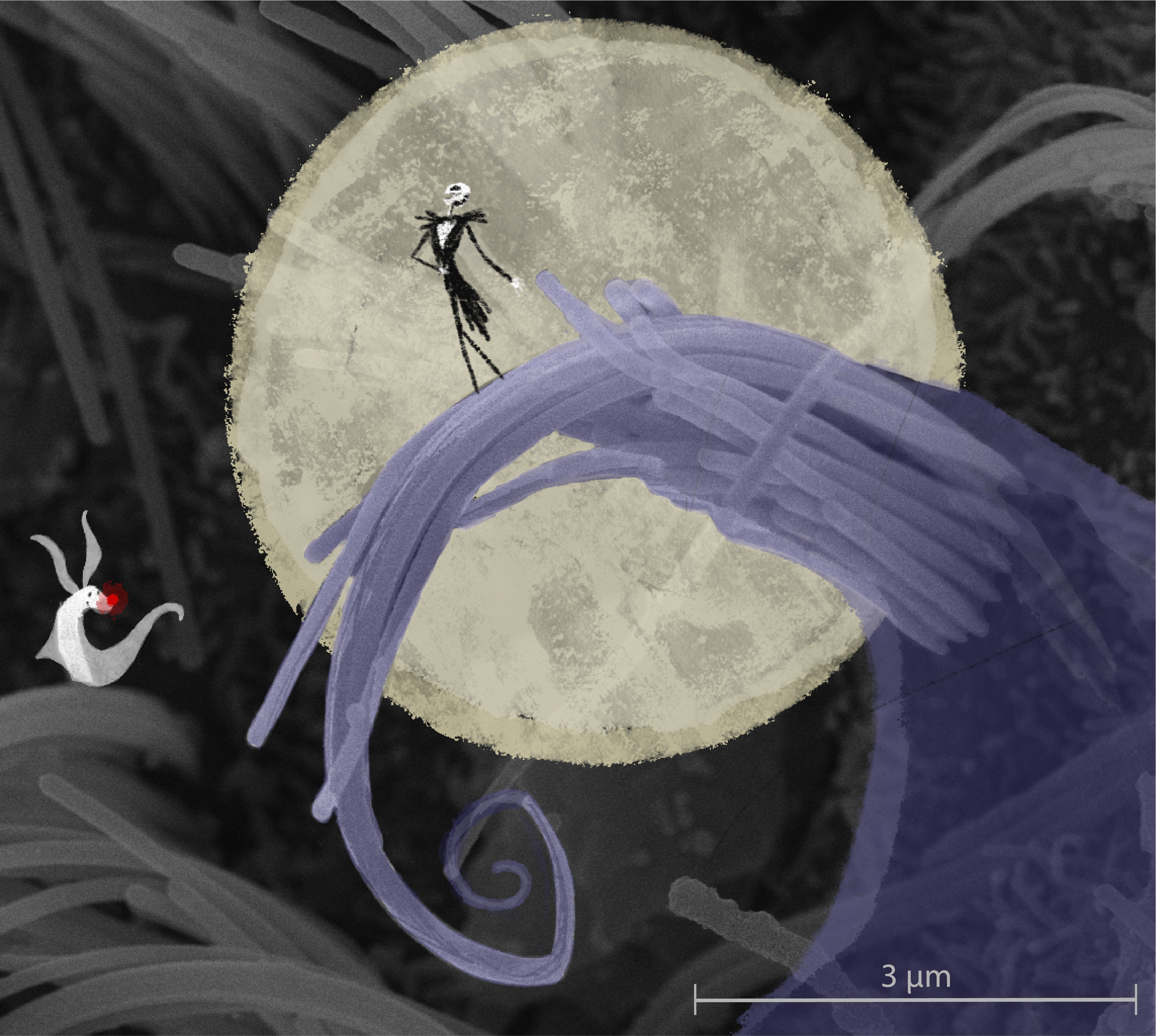
Micro-Nightmare
Artists: Ava Kruse and Catalina Velez-Ortega, Research Scientists, University of Kentucky
NNCI Site: KY Multiscale
Tool: Helios FIB-SEM
This is an image of a scanning electron micrographs of a mouse vestibular hair cell stereocilia bundle. Superimposed color layers and drawings were added to it using Procreate.
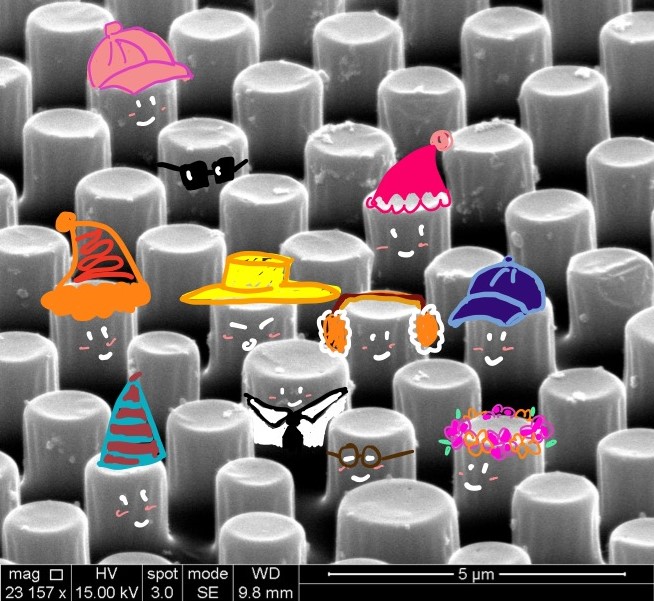
Cylinders Party
Artists: Tianyue “Mary” Gao, grad student, University of Pennsylvania
NNCI Site: MANTH
Tool: Quanta 600 FEG ESEM
These features are present on the surface of the anion exchange membrane to enhance surface contact between the membrane and the catalyst. This improvement has the potential to enhance the water dissociation and formation performance occurring at the bipolar membrane junction.
The patterned silicon wafer templates are produced using oxygen plasma etching and deep reactive ion etching technique. An anion exchange membrane polymer solution is then applied to these templates. After the polymer solution is dried and membrane formed, the membrane’s surface is examined through SEM.

Crystalline City and an Alien's Descent
Artists: Nuttha Hengtrakul (Graduate student) and Jody Lulich (Professor), University of Minnesota
NNCI Site: MiNIC
Tool: Thermo Apreo 2S Lo-Vac SEM
This image features a hexagonal-shaped crystal from a cystine stone, reimagined as a futuristic spaceship. The crystal spaceship hovers above a pile of smaller crystals that form a dystopian cityscape below. From the spacecraft, an alien parachutes gracefully into the scene, while its two alien dogs relax and enjoy themselves on the spaceship. As the alien descends, it passes over shattered skyscrapers and futuristic ruins. The scene captures the moment of arrival in a new world, where scientific wonder meets the boundless possibilities of imagination.
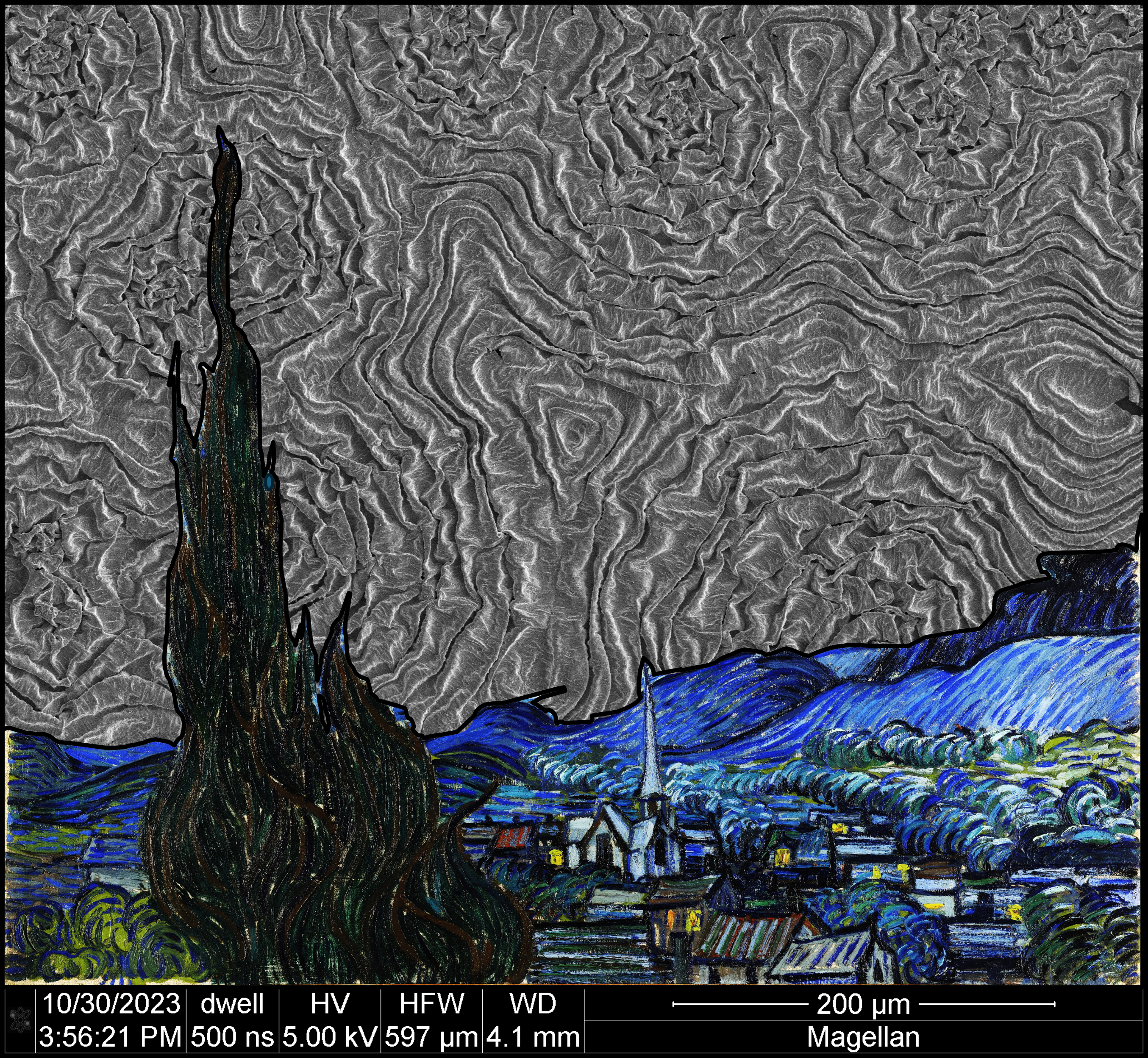
Winkly Starry Night of Lithium
Artists: Jun Ho (Graduate Student, Cui Group) & Sanzeeda Shuchi (Graduate Student, Bent Group), Stanford University
NNCI Site: nano@stanford
Tool: SEM-Magellan
Plating lithium on Au-Al2O3 substrate formed a nice, wrinkly surface that resembles the sky from "The Starry Night" by van Gogh. (Top-view SEM image integrated with 'The Starry Night' (image from Wikipedia))
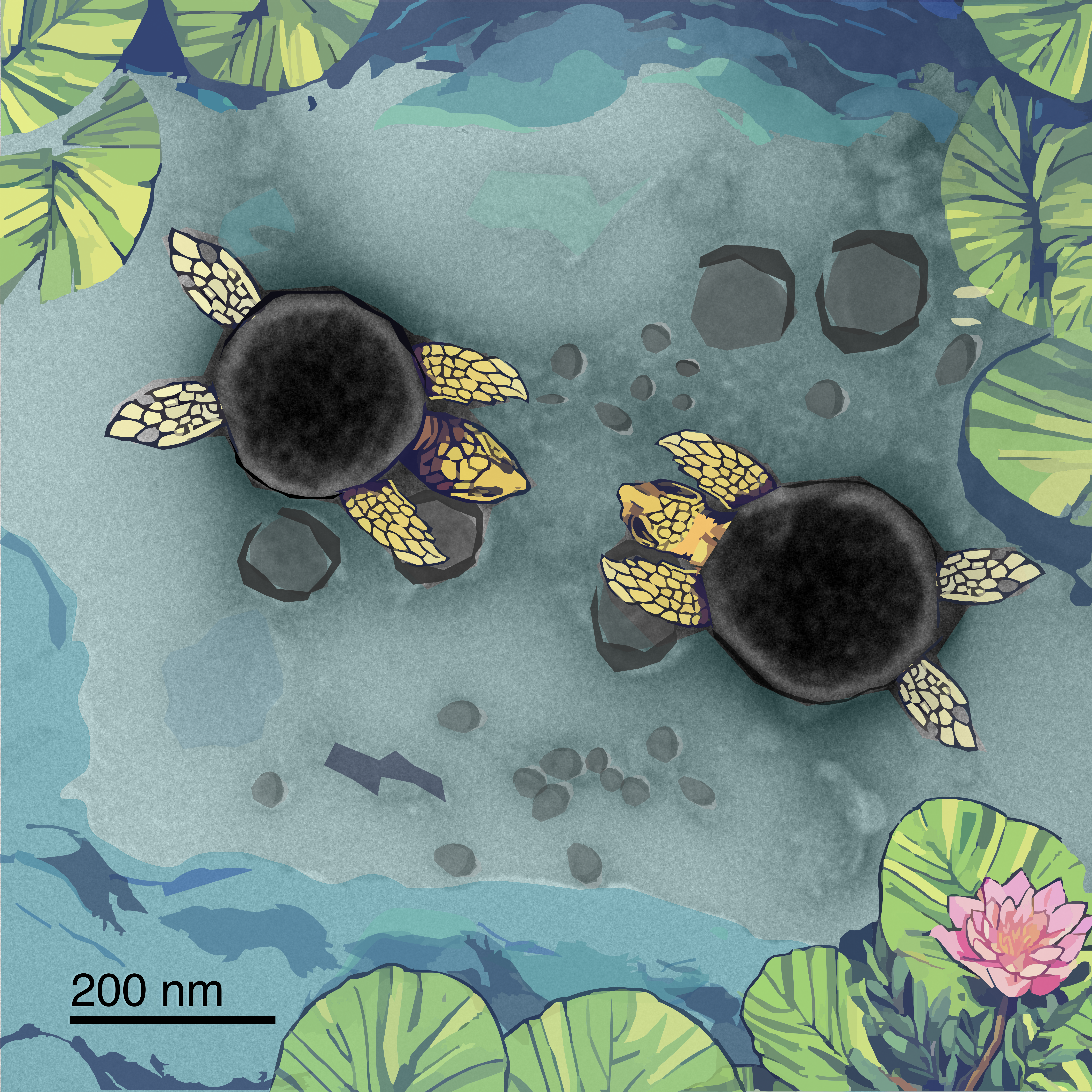
Teenage Viral Micro Turtles
Artists: Maria P. Erazo-Garcia (PhD Student) and Frank Aylward (Associate Professor), Department of Biological Sciences, Virginia Tech
NNCI Site: NanoEarth
Tool: JEOL 2100 TEM
Viruses can sometimes integrate within their host’s DNA, lurking in the shadows until the perfect conditions are met to reactivate once again. Viruses in the phylum Nucleocytoviricota, often called “giant viruses” are no exception. However, many of these viral sequences appear eroded, raising doubts about their viability. For the first time an endogenous giant virus in a green alga is shown to establish a latent infection, and it is the largest of its kind. The viral particles, collected from highly concentrated supernatants, are depicted here, inspired by the mythical World-bearing Turtle—this time carrying the giants of the microcosmos.
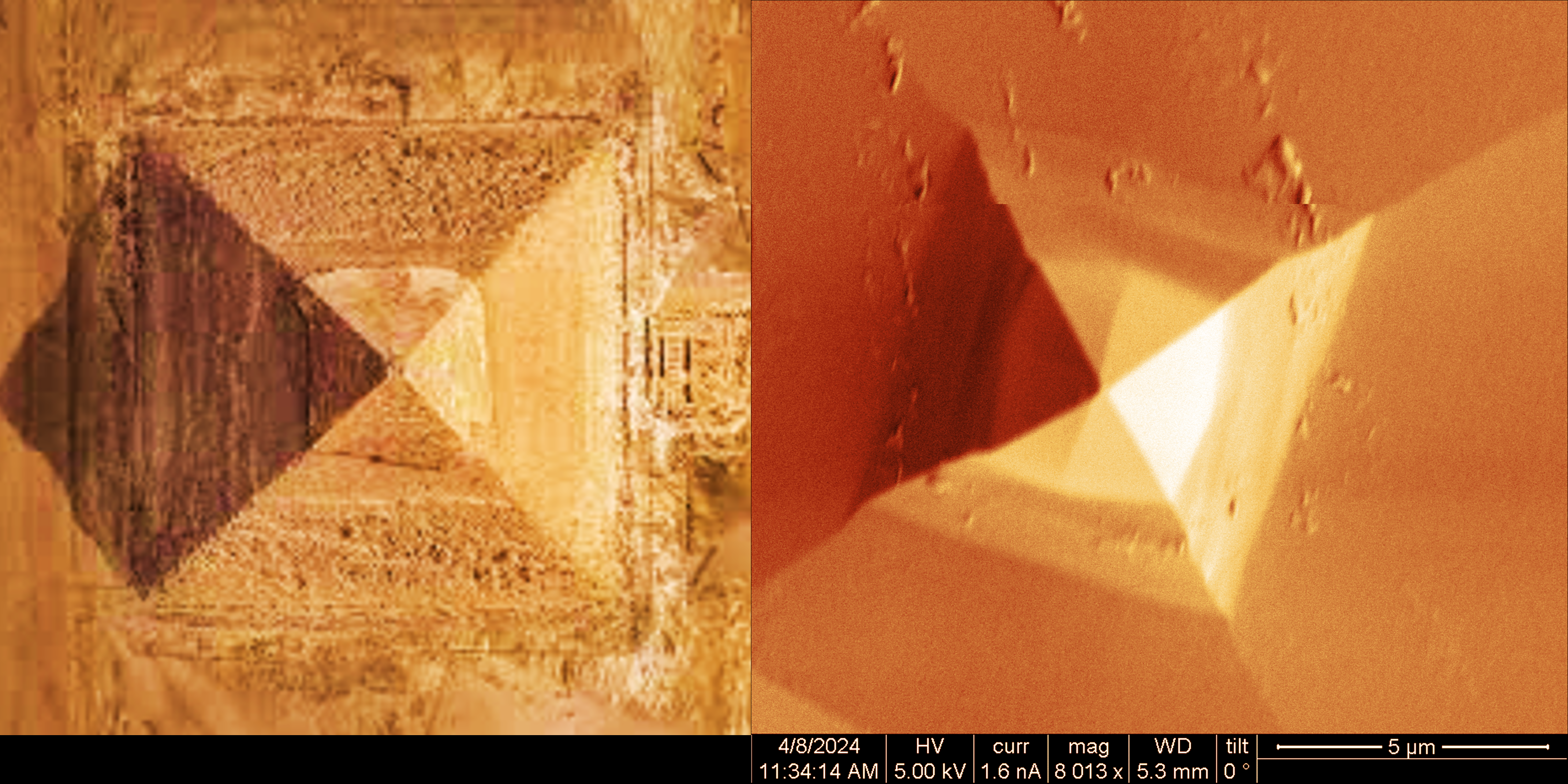
Pyramid inside a microscope
Artists: Md Ashiqur Rahman Laskar (Graduate student) and Umberto Celano (Associate professor), Arizona State University
NNCI Site: NCI-SW
Tool: Nova 200 NanoLab (FEI) SEM/FIB
In a scanning electron microscopy (SEM) image, the tip of an atomic force microscopy (AFM) probe looks like the world-famous Pyramid (top-view) located in ancient Egypt. While the actual Pyramid (on left half of the image) is gigantic in size as we know, the microscopic structure of the AFM tip surprisingly appears as the polyhedron shape of the real Pyramid. This microscopy image was captured during the investigation of the tip vertex condition after doing some experiments with the probe.

Micro Mind Flayer
Artists: René Arvizu, PhD student, Lucas Meza Group, Mechanical Engineering, University of Washington
NNCI Site: NNI
Tool: ThermoFisher Scientific Apreo 2s SEM
This image is taken on the surface of a microcellular polymer foam, however, the 'spider' structure was an anomaly, never seen before; it resembles the Mind Flayer creature from Stranger Things.
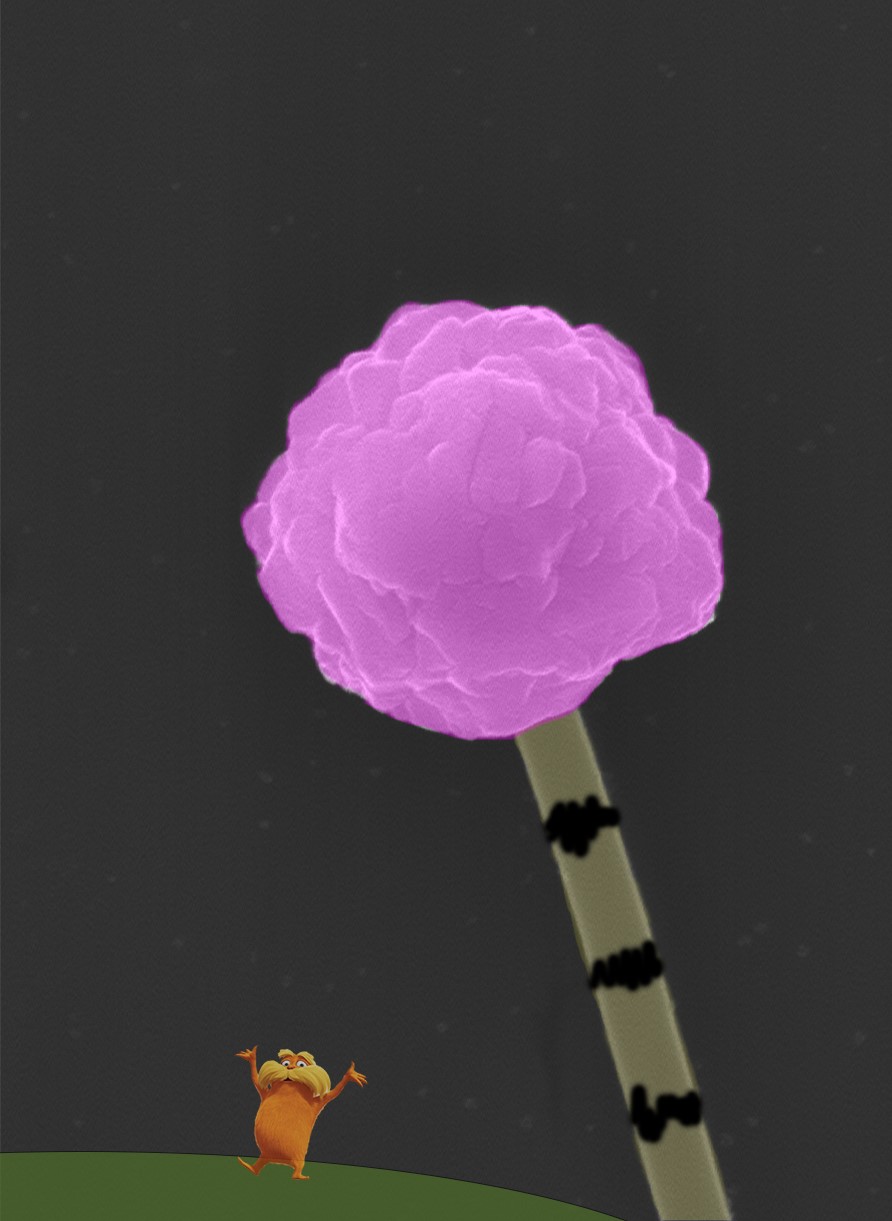
Nanoscale Truffula Tree
Artist: Will Hemmingson, Graduate Student, University of North Carolina at Chapel Hill
NNCI Site: RTNN
Tool: Hitachi S-4700 SEM
A silicon nanowire with photodeposited copper co-catalyst. These nanoscale truffula trees are capable of performing artificial photosynthesis by using sunlight to turn carbon dioxide into more useful fuels like ethanol.
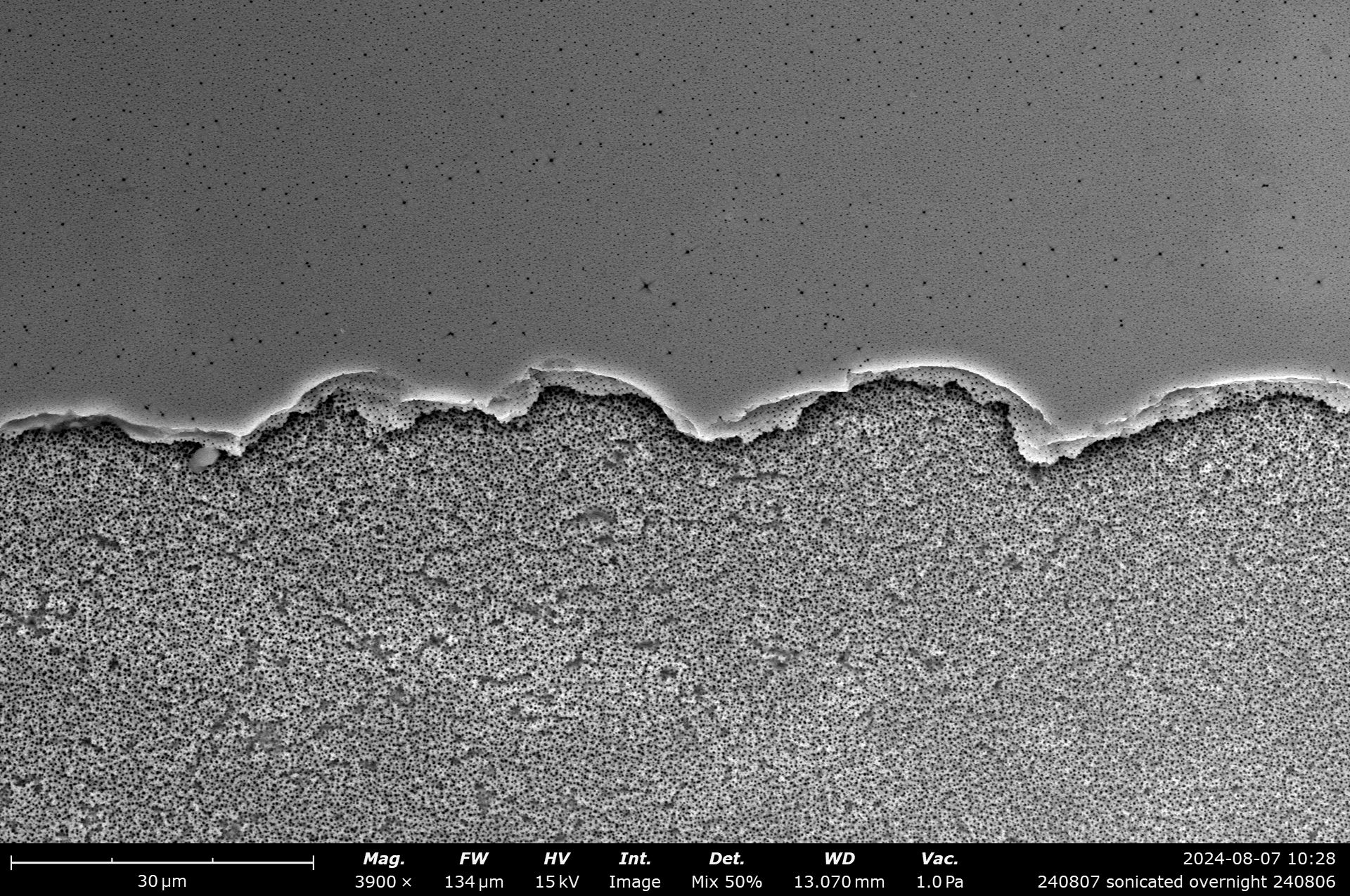
Micro-Scale Ocean Waves from San Diego
Artist: Jiuk Byun, Graduate Student, University of California - San Diego
NNCI Site: SDNI
Tool: SEM
This is a top-down view of two different layers of a chemically etch porous silicon. The difference in pore sizes between the layers and the shape of the edge make it look like a wave at a beach. There was no modification to the original image.

Land Boundaries
Artist: Maurelio Cabo Jr., Graduate Student, Department of Nanoscience, The University of North Carolina at Greensboro – Joint School of Nanoscience and Nanoengineering
NNCI Site: SENIC
Tool: Zeiss Auriga FIB/FESEM
This image shows biochar made from bacterial nanocellulose that was freeze-dried and infused with aluminum oxide (Al2O3) in 50 nanometers to increase its thermal stability. The intriguing part is how the structure seems to mimic the land boundaries between Russia and the USA, like the separation seen in the Bering Strait. The larger fragment on the right represents Alaska (USA), while the smaller piece on the left appears like part of Russia, with a visible division in between. This research explores how strengthening biochar with aluminum oxide can create durable, eco-friendly materials for various environmental applications.
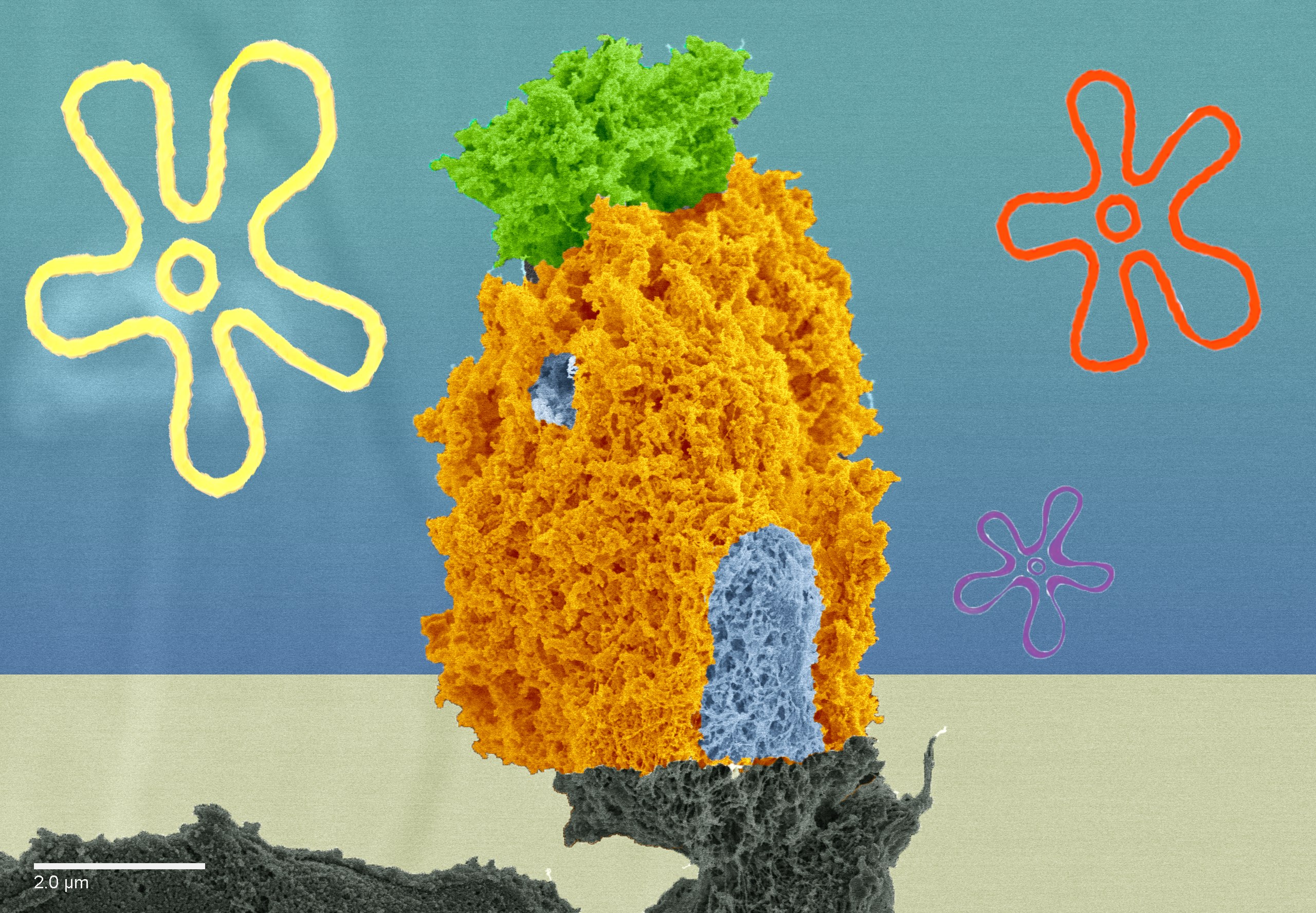
A Pineapple…Under the Sea!
Artist: Nicolas Gogola, NUANCE Assistant Core Scientist, Northwestern University
NNCI Site: SHyNE
Tool: Hitachi SU8030 FESEM
What appears to be a pineapple under the sea may actually be something very unexpected: a piece of a mouse’s inner ear. The sample is a mouse cochlea, yet all we see is a pineapple, and we’re somehow reminded…of a sponge?

